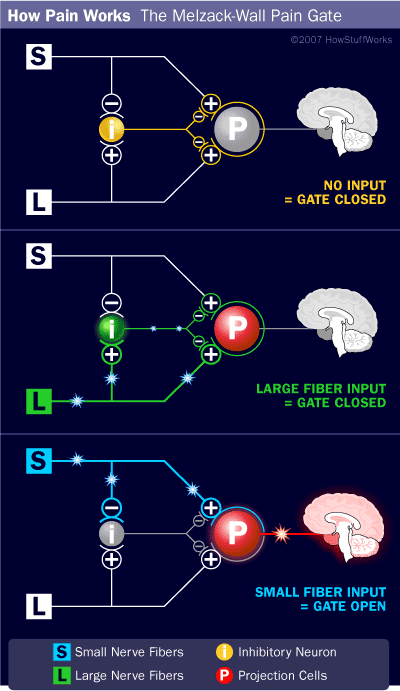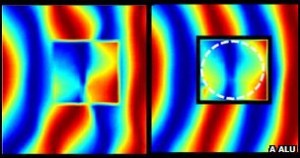Everyone has experienced it at least once, where a slip or misjudgement quickly led to a painful stubbing of your elbow or toe. Usually when this happens though, there’s a near reflexive behavior we exhibit: we begin to rub the injured area instinctively-thinking this will help the pain! Could there be an actual biological purpose behind this? Well according to a 20th century theory from Neuroscientists Ronald Melzack and David Wall, pain and touch may actually compete for perception from your elbow to the brain. This concept is known as the Gate Control Theory of Pain, and is still a dominant theory of the interactions of touch and pain today.
So how could rubbing your whacked elbow dull out the pain? The theory is based on the pathways of two receptors: mechanoreceptors, which transmit touch as changes in pressure, vibration and movement on the skin; and nociceptors, which transmit pain from damage or potential damage to the skin. Both receptors send nerve signals through different pathways to a region of the spinal cord known as the Substantia Gelatinosa (SG), which is full of transmission cells that send pain and touch signals to the brain.
Though both pain and touch nerve fibres leave the skin and arrive at the SG, the speeds at which they get there are drastically-different. Touch sensations reach the spinal cord through A-beta fibres, which are very fast due to their wide, myelinated axons. The sharp pain of nociception travels through slightly-slower myelinated A-delta fibres, and that dull, throbbing pain we feel occurs from a separate, slower C fibre.
What Melzack and Wall’s Gate Control Theory proposes is that if touch and pain meet together in the SG, then touch will have an inhibitory effect on the transmission of the sensation of pain (left). So relating this back to that painfully-stubbed elbow, at first you’d may remember feeling a sharp A-delta pain followed by a dull C-fibre one (S). However, if you rub at the injured area afterwards, then the fast A-beta touch fibres (L) may cause an overwhelming inhibitory effect on the pain transmission through the SG, exchanging the perception as touch instead! So perhaps rubbing that elbow really does make a difference in the end. Worth noting though is there is a reason this theory has received scrutiny; it is a rather simple theory to explain an entire range of somatosensation we experience, and recent physiological work has shown that the transmission of pain and touch is more complicated than what the Pain Control Gate theory suggests. Regardless, it may be the only somatosensory theory that can explain the many observed interactions between pain and touch, including why rubbing the skin of that stubbed elbow seems to mask the pain so well.
References
Wolfe, J. M., Kluender, K. R., Levi, D. M., Bartoshuk, L. M., et al. (2009). Sensation and Perception. (2nd ed.). Sinauer Associates, Inc.
http://www.drgordongadsby.talktalk.net/page13.htm
http://science.howstuffworks.com/environmental/life/human-biology/pain4.htm



 (Artist’s concept of Kepler-22b from Kepler: Home Page)
(Artist’s concept of Kepler-22b from Kepler: Home Page)